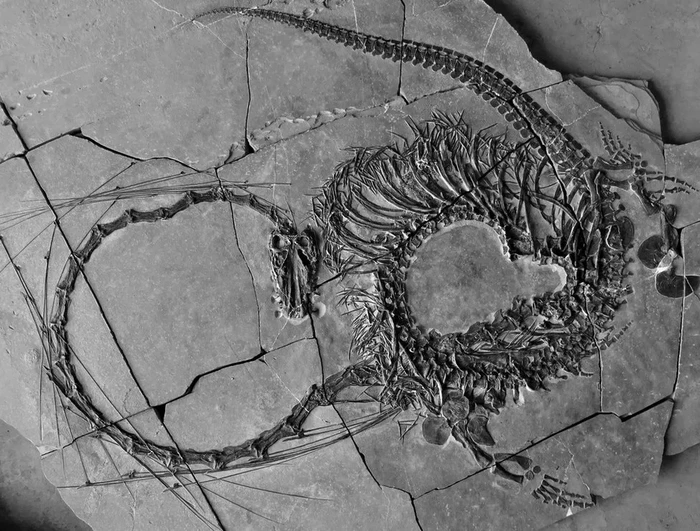The discovery of new fossils has enabled scientists to unveil a dragon-like creature dating back 240 million years for the first time ever. Scientists from the National Museums Scotland are left in awe of this creature.

A 5-meter-long reptile from the Triassic period in China was first identified in 2003. Now, after studying five new specimens for 10 years, scientists were able to describe the entire creature, named Dinocephalosaurus orientalis.
According to Dr. Nick Fraser of NMS, one of the researchers, one of the fossils is a beautiful complete specimen from nose to tail tip. "Its shape is circular like the figure eight and... it strongly reminds us of the Chinese dragon," he said, as quoted from CNN.
The fossil has helped unveil this mysterious creature, and an international team of researchers from Scotland, Germany, the United States, and China published their findings in the journal Earth and Environmental Science Transactions of the Royal Society of Edinburgh.
This aquatic reptile is dubbed a dragon because of its remarkably long neck. Dr. Nick Fraser referred to it as an extremely strange creature. "It has limb-like fins and its neck is longer than the combination of its body and tail," he said.
Professor Li Chun from the Institute of Vertebrate Paleontology and Paleoanthropology in Beijing was the first to discover the fossil in 2003. He visited a small village in Guizhou Province and found small vertebrae in limestone slabs.
Now, the new fossil indicates that the creature had 32 vertebrae, thus creating an exceptionally long neck that likely aided it in catching fish. However, scientists are still puzzled and confused about its exact function.
learn more 1.1.1.1 vs 1.0.0.1 !
"I am still puzzled by the function of its long neck. The only thing I can surmise is that they were foraging in rocky marine environments, perhaps crevices within them. And they used their long necks to probe and move into some of these crevices and possibly capture prey that way," he said.
There are fish prey preserved in the stomach of one of the fossils, indicating its adaptation to the marine environment, with its fins reinforcing this hypothesis. The long neck of Dinocephalosaurus resembles the ancient marine reptile Tanystropheus hydroides, which is also perplexing.
"As paleontologists, we use modern analogs to understand past life. For Dinocephalosaurus and Tanystropheus, there are no analogs in the modern world," Fraser said.
"So we are still struggling quite hard, as we do with many animals in the Triassic period, because it's a strange and amazing world where all sorts of bizarre creatures do things that don't seem to be done by animals today," he concluded.



